What does future warfare look like? It's here already
- Published
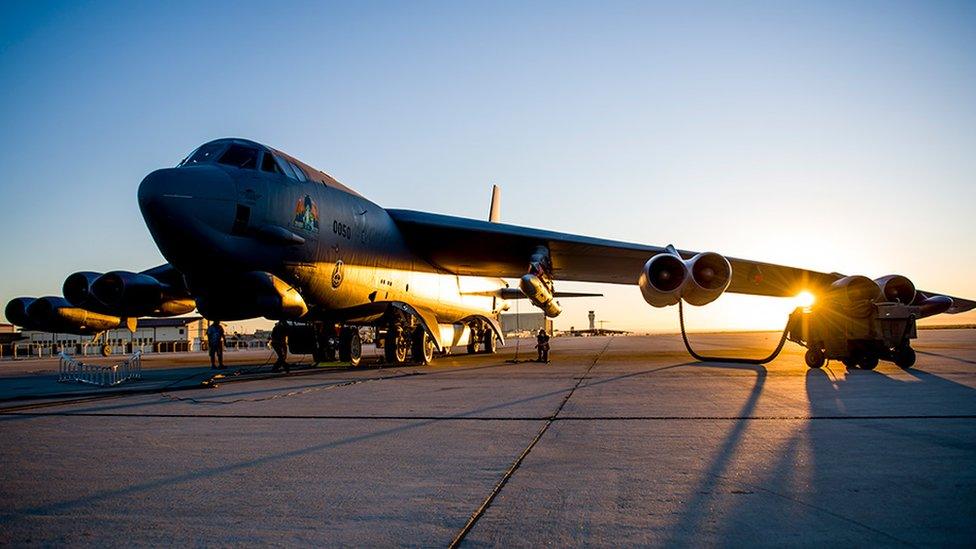
B-52H Stratofortress conducts a flight test of hypersonic missile the AGM-183A, California, 2020
The year 2021 has seen a fundamental shift in British defence and security policy. Up goes the budget for digital technology, artificial intelligence and cyber. Down goes the money for more traditional hardware and troop numbers.
All of this at a time when Russian forces are massing on Ukraine's borders, Moscow has been demanding Nato withdraw from some of its member states, and China is making ever louder noises about retaking Taiwan - by force if necessary.
Small, regional conflicts still erupt around the globe. Ethiopia has a civil war, Ukraine's separatist conflict has killed over 14,000 people since 2014, Syria's insurgency simmers on and Islamic State group is rampaging through parts of Africa.
But what does the future of great-power warfare look like and is the West a match for the challenges ahead?
First off, "future warfare" is already here. Many of the aspects of a major conflict between the West and say, Russia or China, have already been developed, rehearsed and deployed.
On 16 November, Russia carried out a missile test in space, destroying one of its own satellites. Over the summer China conducted tests of its advanced hypersonic missiles, capable of travelling at many times the speed of sound. Offensive cyber attacks, whether disruptive or predatory, have become a regular daily occurrence, something known as "sub-threshold warfare".
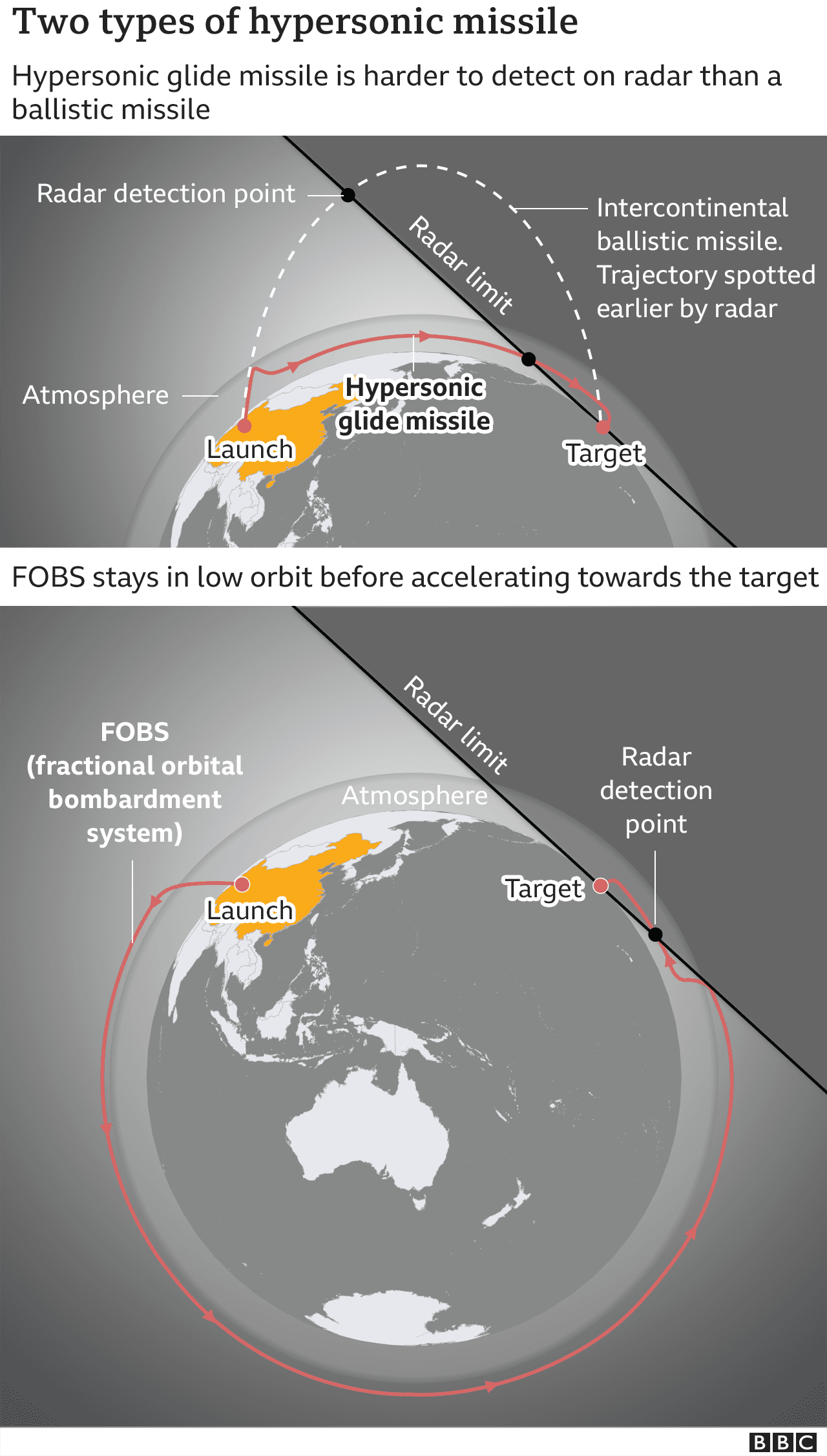
Michele Flournoy was a Pentagon policy chief for US strategy under both Presidents Clinton and Obama. She believes the West's focus on the Middle East for the past two decades has allowed its adversaries to do a lot of catching up in military terms.
"We are really at a strategic inflection point where we - the US, the UK and our allies - are coming out of 20 years of focusing on counter terrorism and counter insurgency, the wars in Iraq and Afghanistan, and lifting our gaze to realise we are now in a very serious great-power competition," she says.
She is referring, of course, to Russia and China, described respectively in the UK government's Integrated Review as "the acute threat" and the long-term "strategic rival" to the West.
"While we were focused on the broader Middle East," she says, "these countries went to school on the Western way of war. And they started investing massively in a whole host of new technologies."
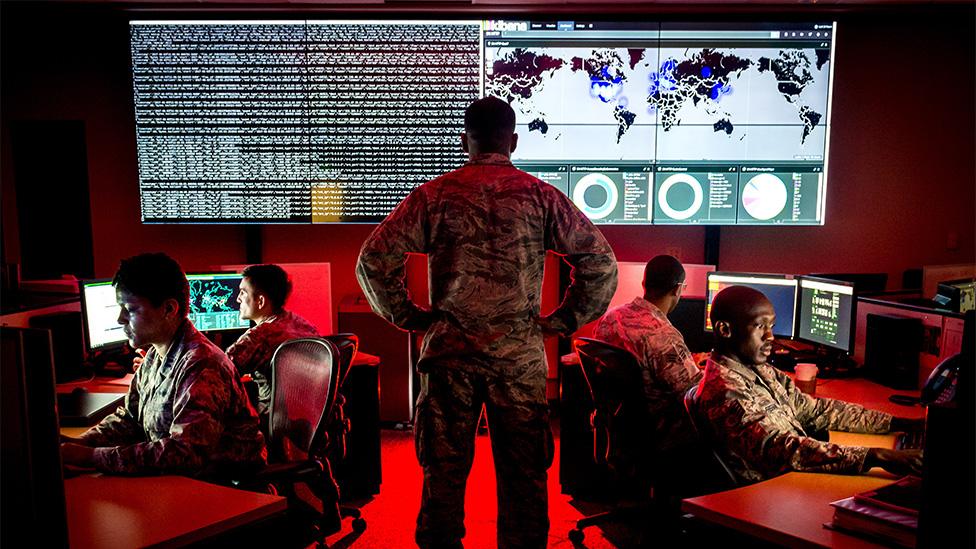
US Air Force personnel conduct cyber operations at Warfield Air National Guard Base, Maryland, 2017
Much of this has been directed at cyber activity - disruptive attacks aimed at undermining the fabric of Western society, influencing elections, stealing sensitive data. This is well below the threshold of warfare and much of it deniable.
But what if the current tensions between the West and Russia over Ukraine, say, or between the US and China over Taiwan broke out into hostilities? What would that look like?
"I think this would play out in a very fast-paced environment that's heavily reliant on the information domain,"says Meia Nouwens, a senior research fellow at the International Institute for Strategic Studies (IISS) focusing on China's use of data for military advantage.
"China's People's Liberation Army has built a new agency called the Strategic Support Force which looks at space, electronic warfare and cyber capabilities."
Meaning what, in practice? Well, almost the first things that would happen in any hostilities would be massive cyber attacks by both sides. There'd be attempts to "blind" the other by knocking out communications, including satellites, or even cutting the vital undersea cables that carry data.
I asked Franz-Stefan Gady, a specialist on future warfare at the IISS, what this would mean for you and me, here on the ground. Could our phones suddenly stop working, petrol stations run dry and food distribution get thrown into chaos?
"In all likelihood, yes," he says. "Because great powers are massively investing not only in offensive cyber capabilities but also in electronic warfare capabilities that can jam satellites and bring down communication. So not just the military but societies overall will be a prime target in future conflict."
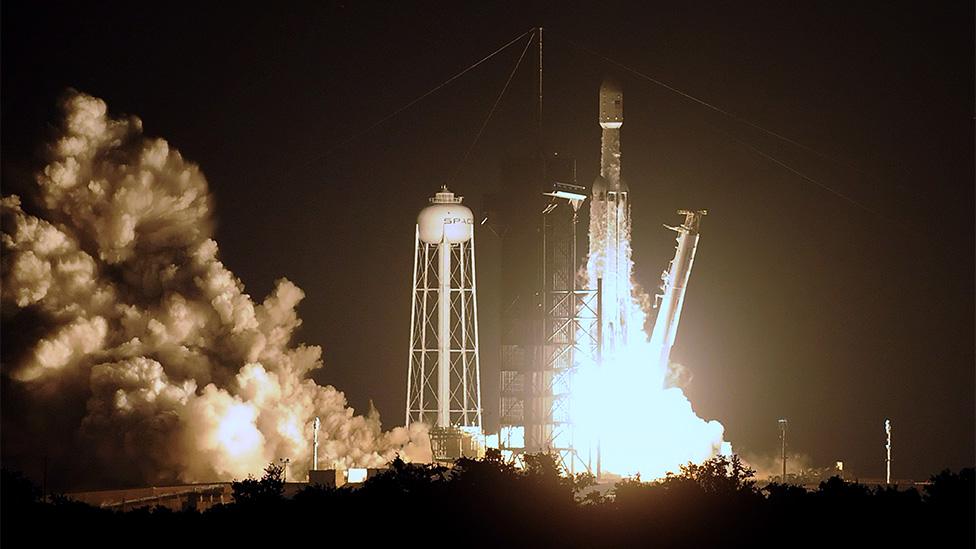
A SpaceX rocket carrying satellites for the US Air Force launches from Kennedy Space Centre in Florida, 2019
The biggest military danger here is unplanned escalation. If your satellites are not communicating and your planners sitting in their underground command bunkers can't be sure what's going on, then it makes it extremely hard to calibrate the next move.
Meia Nouwens believes this leaves them with the choice of responding in either a "minimalist" or "maximalist" fashion, which carries the inherent risk of further escalating tensions.
One factor that is likely to play a major role in future warfare is artificial intelligence - AI. This can massively speed up commanders' decision-making and response times, allowing them to process information far more quickly.
Here, the US has the qualitative edge over its potential adversaries and Michele Flournoy believes it can offset areas where the West is outnumbered by the vast size of China's People's Liberation Army.
"One of the ways to gain some quantitative mass back and to complicate adversaries' defence planning or attack planning is to pair human beings and machines," she says. "So if you have one manned platform that can control 100 unmanned platforms, then you start to buy back that quantitative balance."
But there's one area where the West is falling dangerously behind Russia and China. That's hypersonic missiles - super-charged projectiles that can fly at anywhere between five and 27 times the speed of sound and carry either a conventional or nuclear warhead.
Russia has announced successful tests of its Zircon hypersonic cruise missile, proclaiming that it can defeat any defences anywhere in the world.
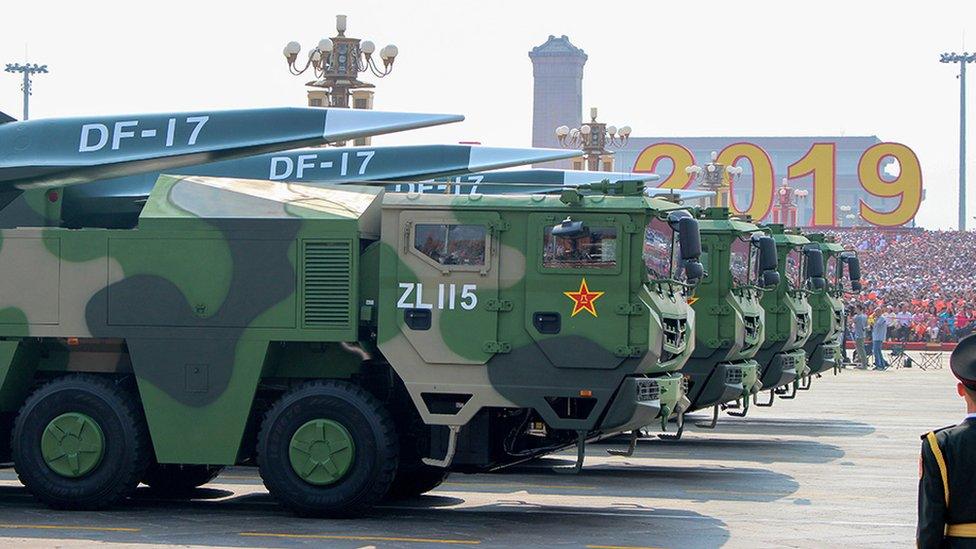
Dong Feng 17 missiles equipped with a hypersonic glide vehicle, Beijing, 2019
China's Dong Feng 17, first revealed in 2019, carries a hypersonic glide vehicle (HGV) that can manoeuvre through the atmosphere with an almost unpredictable trajectory, making it hard to intercept.
Recent tests of US systems, by contrast, have not gone well. The arrival of these weapons in China's arsenal is now making Washington think twice about going to war to defend Taiwan if China does decide to invade it.
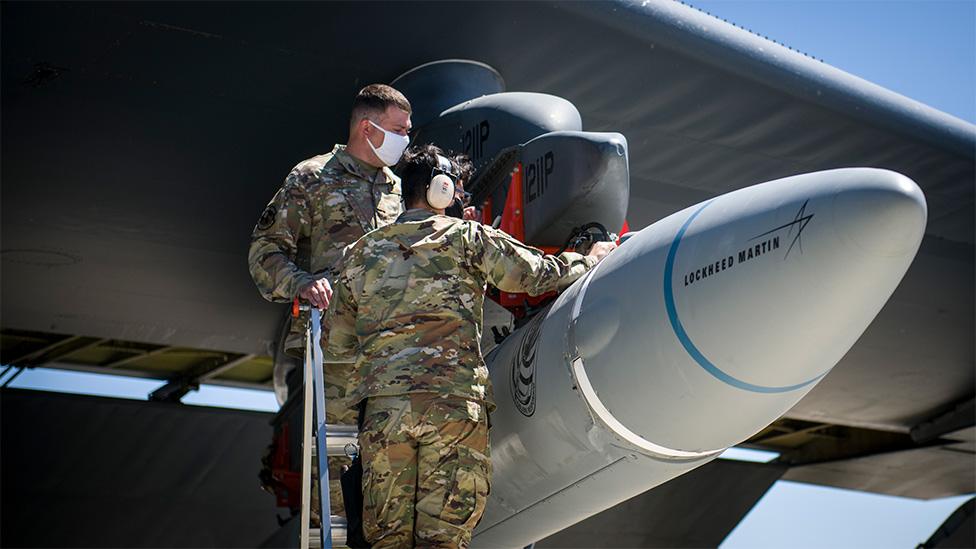
US Air Force flight test of hypersonic missile the AGM-183A, California, 2020
Yet right now, on the cusp of 2022, the Russian forces massing on Ukraine's border, while certainly inclusive of offensive cyber and electronic warfare capabilities, are mainly composed of conventional hardware, such as tanks, armoured vehicles and troops - the same sort of hardware that would be deployed if Moscow decided to roll back into the Baltic states, for example.
The UK has taken the decision to cut its conventional forces in favour of investing in new technology. Franz-Stefan Gady, the specialist in future warfare, believes this will certainly yield benefits in 20 years' time but before then there will be a worrying gap.
"I think we're going to have a very dangerous period within the next five to 10 years when a lot of the downsizing is going to happen. At the same time, a lot of these emerging technological capabilities will not be mature enough to really have an operational impact," he says.
And those next five to 10 years could well see some of the most dangerous challenges to Western security. So is it all doom and gloom? Not according to Michele Flournoy, who spent years right at the heart of US defence policy. She believes the solution is two things - close consultation and collaboration with allies and investment in the right places.
"If we put our minds together and really invest in the right technologies, the right concepts, and we develop those with speed and scale, we should be able to deter great-power war," she says. "We should be able to achieve our objectives and keep the Indo-Pacific, for example, free and open and prosperous into the future."
You can listen Frank Gardner's full report on BBC Radio 4's Today programme, guest-edited by General Sir Nick Carter, the former Chief of Defence Staff